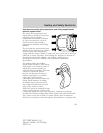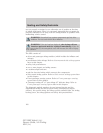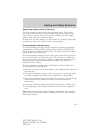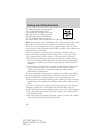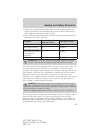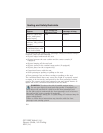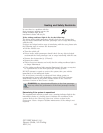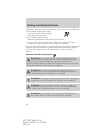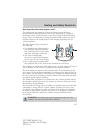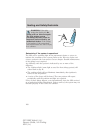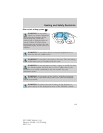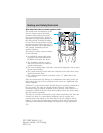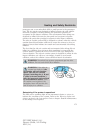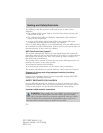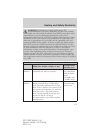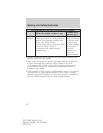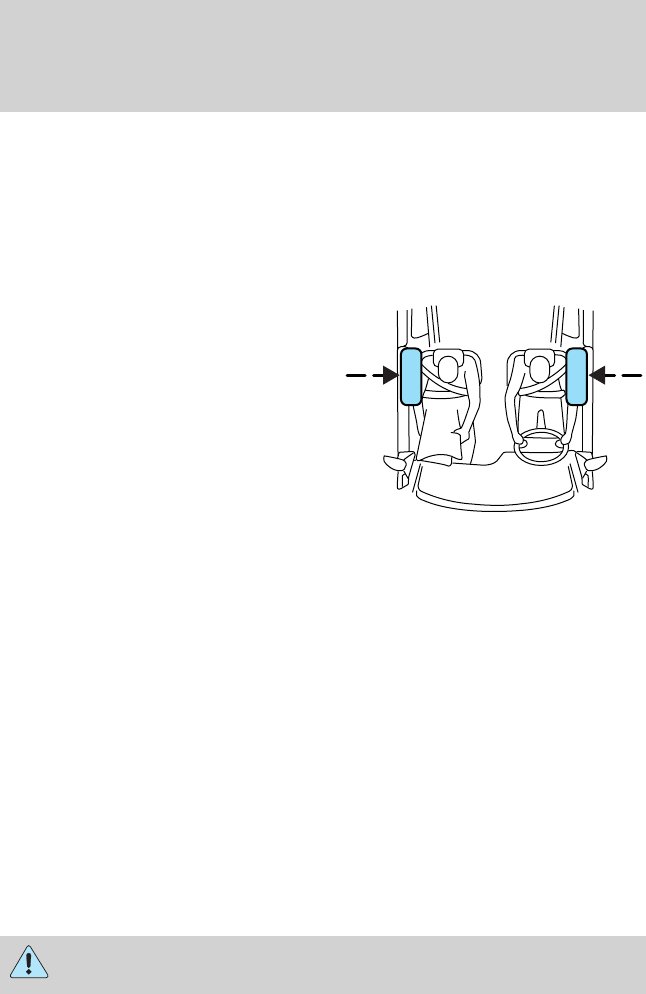
How does the side airbag system work?
The design and development of the side airbag system included
recommended testing procedures that were developed by a group of
automotive safety experts known as the Side Airbag Technical Working
Group. These recommended testing procedures help reduce the risk of
injuries related to the deployment of side airbags (including side air
curtain systems).
The side airbag system consists of
the following:
• An inflatable bag (airbag) with a
gas generator concealed behind
the outboard bolster of the driver
and front passenger seatbacks.
• The same warning light,
electronic control and diagnostic
unit as used for the front airbags.
• Two crash sensors located under
the outboard side of the front seats, attached near the floor.
Side airbags, in combination with safety belts, can help reduce the risk of
severe injuries in the event of a significant side impact collision.
The side airbags are fitted on the outboard side of the seatbacks of the
front seats. In certain lateral collisions, the airbag on the side affected by
the collision will be inflated. The airbag was designed to inflate between
the door panel and occupant to further enhance the protection provided
occupants in side impact collisions.
The airbag SRS is designed to activate when the vehicle sustains lateral
deceleration sufficient to cause the sensors to close an electrical circuit
that initiates airbag inflation.
The fact that the airbags did not inflate in a collision does not mean that
something is wrong with the system. Rather, it means the forces were
not of the type sufficient to cause activation. Side airbags are designed
to inflate in side-impact collisions, not roll-over, rear-impact, frontal or
near-frontal collisions, unless the collision causes sufficient lateral
deceleration.
WARNING: Several air bag system components get hot after
inflation. Do not touch them after inflation.
Seating and Safety Restraints
167
2011 MKZ Hybrid (hkz)
Owners Guide, 1st Printing
USA (fus)



